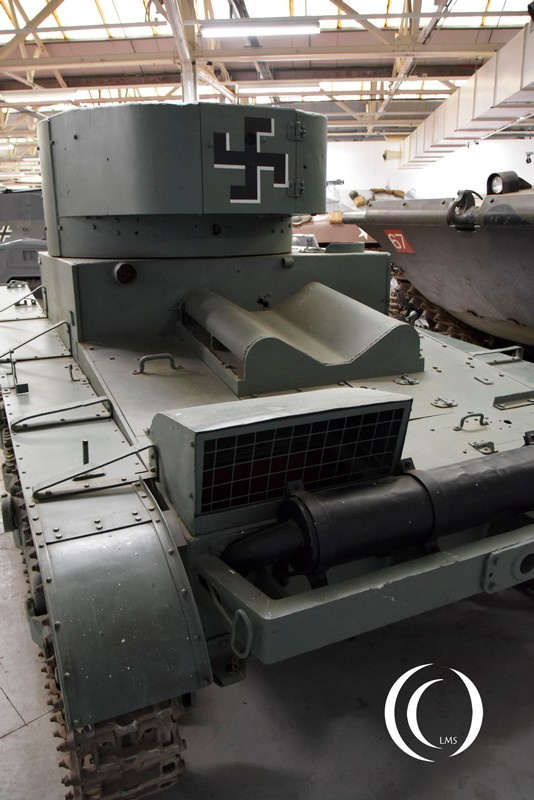T-26 model 1933 Russian Light Tank painted in Finnish Army colors. Photographed at The Tank Museum in Bovington, England 2017.
The tank was used in the Winter War. It was damaged and captured by the Finnish Army. They removed the engine and dug the tank in, creating a pillbox with a gun as a fixed defensive position on the Mannerheim line.

T-26 Model 1933 Ligth Tank
The T-26 Model 1933 was a Soviet light tank that played a crucial role in the early stages of World War II, particularly during the Spanish Civil War and the early Soviet offensives in 1941. Based on the British Vickers 6-Ton tank design, the T-26 was heavily modified by the Soviets, becoming one of the most widely produced Soviet tanks of the 1930s.
The T-26 Model 1933 was armed with a 45 mm P-26 gun and a 7.62 mm DT machine gun, offering decent firepower for its time. The gun was mounted in a fully rotating turret, giving it increased flexibility in combat. However, the T-26’s firepower was soon outclassed by more heavily armored German tanks during the war.
Powered by a 90-horsepower M-5 engine, the T-26 had a top speed of about 32 km/h (20 mph) and a range of 160 km (99 miles) on roads. Its weight of approximately 9 tons allowed for good mobility in various terrains. The tank’s armor thickness ranged from 6 mm to 15 mm, which provided minimal protection against modern anti-tank weapons, making it vulnerable to German guns as the war progressed.
The T-26 was widely used in the early stages of the war, but it was eventually phased out as more advanced tanks like the T-34 took over frontline duties. Despite its obsolescence, the T-26 was a symbol of Soviet armored warfare during the early years of the conflict.





